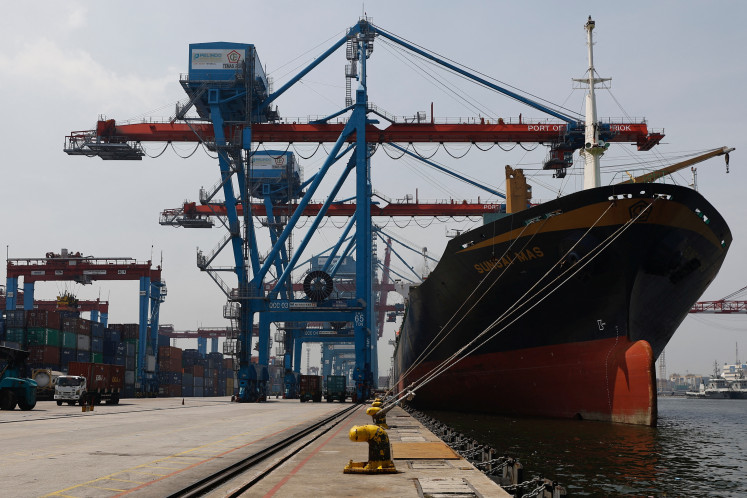Hundreds of Cirebon batik motifs left unprotected
Around 400 traditional batik motifs from Cirebon, West Java, are not protected, raising fear among artisans that foreign parties could patent them before local authorities get the chance
Change text size
Gift Premium Articles
to Anyone

Around 400 traditional batik motifs from Cirebon, West Java, are not protected, raising fear among artisans that foreign parties could patent them before local authorities get the chance.
Katura, from the association of Cirebon batik artisans, said Friday no patents had been applied for in the cases of 400 traditional motifs created by local artisans.
"We worry that foreign parties can claim the motifs as theirs. This would put us in a bat spot," he said.
"We urge the government pay serious attention to this."
He added that protection and marketing support from the government and local authorities were needed to help develop the batik industry that had for generations been maintained well in the region.
Katura said the majority of batik artisans in Cirebon had faced difficulties in penetrating either the domestic or international markets with their products.
"There's a lack of promotion going on. That's why Cirebon batik is less famous than batik from other regions. Only a handful have really gotten into the domestic market," he said.
Popularly known as Trusmi batik, in reference to the biggest batik production center in Plered district, Cirebon batik is believed to have been around since the 14th century, following the establishment of the Kasepuhan Cirebon sultanate.
The batik-making process, Katura said, was initially developed within the sultanate, and later spread to the wider community, reaching the region's coastal areas.
"That explains why Trusmi batik is renowned for its two main motifs: keratonan and pesisiran," said Katura, an eighth-generation Trusmi batik artisan.
The keratonan motif, developed within the royal sultanate compound, is characterized by motifs of palace ornaments depicted in dark colors, dominated by black and brown. Examples of this motif include the Panji Sumirang, Naga Seba, Sawunggaling and Mega Mendung.
The pesisiran motif, on the other hand, was developed in the coastal regions and is dominated by a flora and fauna motif, with bright colors such as red, green and blue.
Although both motifs are rarely produced these days, they still exist, Katura said.
"The fact that they're difficult to find is because most artisans produce batik tailored to the market trend," he added.
The Indonesian government has since last September lobbied UNESCO to recognize batik as a world heritage, with approval expected this year.
Once approved, batik will be the country's third cultural product named a world intangible heritage, after wayang (shadow puppets) and kris (double-edged dagger).
UNESCO named wayang a "Masterpiece of Oral and Intangible Heritage of Humanity" in November 2003 and gave kris a similar status in November 2005.









